SocksDroid Lightweight SOCKS5 Proxy Client for Android
SocksDroid is a lightweight, open-source SOCKS5 proxy client designed specifically for Android devices. It allows users to tunnel their internet traffic through a SOCKS5 proxy server, providing an additional layer of privacy and control over how network requests are routed.
Features
SocksDroid offers powerful features to enhance your connectivity and privacy
Route all your device traffic through SOCKS5 proxies with end-to-end encryption for maximum privacy.
Configure your SOCKS5 connection in seconds with our intuitive interface. No technical knowledge required.
Works on all Android devices without rooting, keeping your device warranty intact.
No hidden fees, subscriptions, or in-app purchases. SocksDroid is completely free to use.
Minimal resource usage and battery impact, optimized for all Android devices and versions.
Create and save multiple connection profiles to easily switch between different SOCKS5 proxy servers.
How SocksDroid Works
- User configures a SOCKS5 proxy server (IP address and port) within the SocksDroid app.
- The app creates a local VPN tunnel on the Android device using the VPNService API (no root required).
- All internet traffic (or selected app traffic, depending on settings) is routed through this tunnel.
- SocksDroid forwards this traffic to the SOCKS5 server, which acts as the middleman between your device and the internet.
- As a result, the traffic appears to originate from the proxy server, not your real IP address.
This setup is especially useful for bypassing geo-restrictions, securing data over public Wi-Fi, or testing proxy configurations.
Use Cases of SocksDroid
Secure Browsing
SocksDroid allows users to route their internet traffic through a SOCKS5 proxy server, which can act as a middleman between the user and the websites they visit. This helps mask the user’s original IP address and encrypts the data as it travels through the proxy, offering an extra layer of security—especially useful when visiting unfamiliar or untrusted websites. While not a full VPN, SocksDroid significantly enhances the safety of your browsing sessions.
Circumventing Regional Restrictions
Many websites and online services are geo-restricted, meaning they are only accessible from specific countries or regions. By using a SOCKS5 proxy located in another country, SocksDroid enables users to appear as if they are browsing from that location. This is particularly helpful for:
- Accessing content that's blocked in your region
- Using apps that are only available in certain countries
- Bypassing internet censorship in restrictive regions
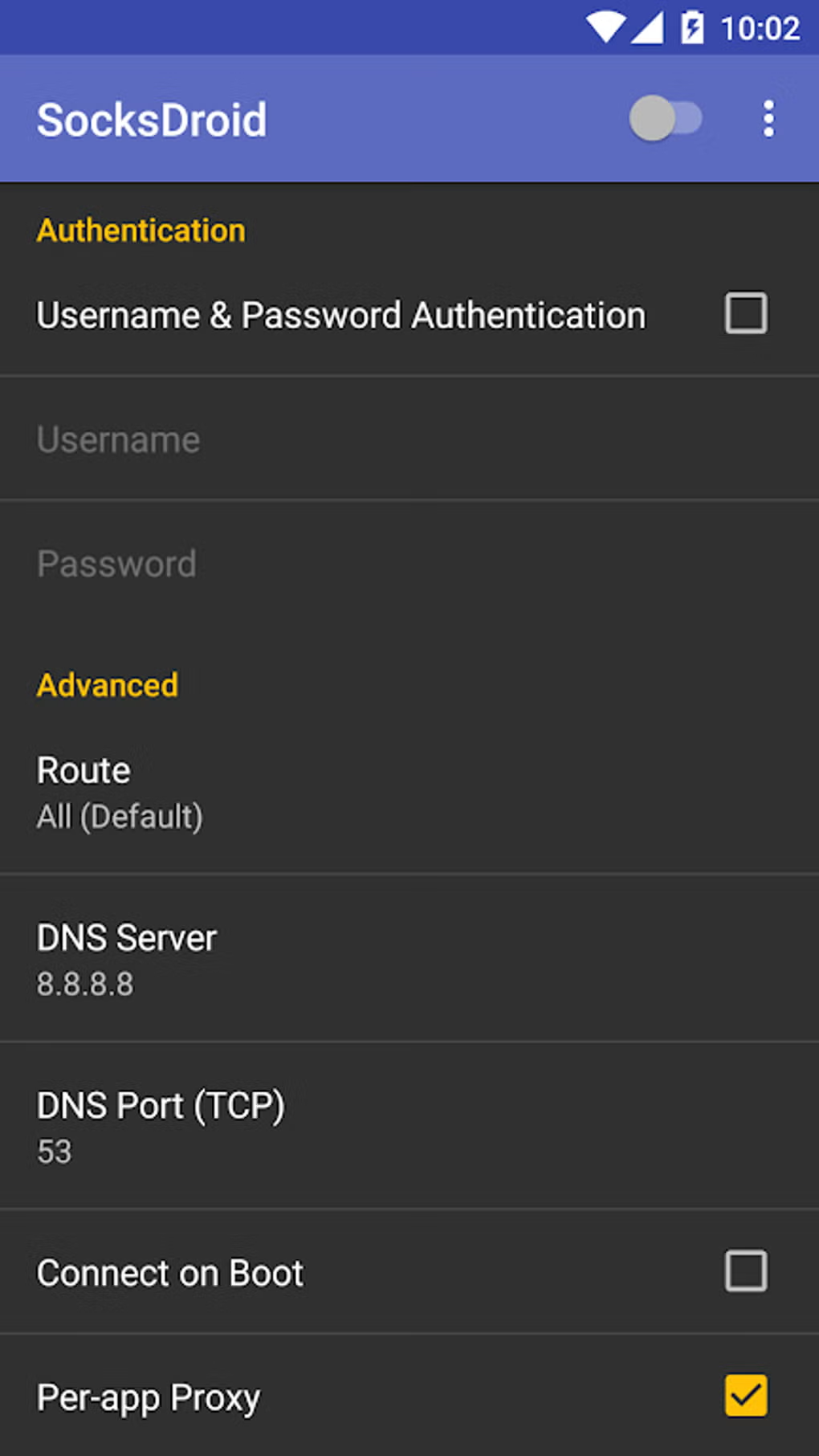
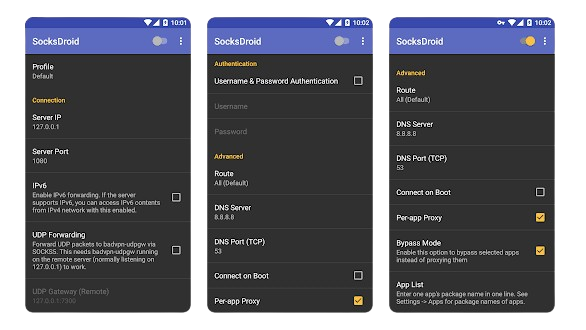
Testing Proxy Servers
Developers, network administrators, and privacy-conscious users often need to test the reliability and functionality of proxy servers. SocksDroid serves as a lightweight, mobile solution to:
- Verify if a proxy server is responsive and properly configured
- Test how different apps behave when routed through a proxy
- Debug connectivity issues related to proxy usage on Android devices
Because SocksDroid works without root access and uses Android’s VPN API to tunnel traffic, it’s perfect for quick, on-the-go proxy testing.
Protecting Privacy on Public Wi-Fi
Public Wi-Fi networks, like those found in cafes, airports, or hotels, are notoriously insecure. Hackers on the same network can intercept unencrypted data, leading to privacy breaches or even identity theft. Using SocksDroid with a trusted SOCKS5 proxy adds a privacy shield by:
- Masking your IP address from potential attackers
- Routing your traffic through an external server, making it harder to track your activities
- Preventing direct exposure of your device to the local network
It’s a simple yet effective way to improve your online safety while using free Wi-Fi.

How to Use SocksDroid
SocksDroid is a lightweight Android application that lets you route your internet traffic through a SOCKS5 proxy server without requiring root access. Follow this step-by-step guide to set it up properly:
Download and Installation
- Avoid untrusted third-party APKs to ensure security.
- Visit trusted sources
Install the App
- If downloaded from GitHub or outside the Play Store, enable "Install from Unknown Sources" in your device settings.
- Tap on the APK file to install it.
- Once installed, launch the app from your app drawer.
Configuration of a SOCKS5 Proxy
- You’ll see a minimal interface prompting for proxy details.
- Host/IP Address: Enter the IP address or hostname of your SOCKS5 proxy server.
- Port Number: Specify the port (usually something like 1080 or a custom port provided by your proxy service).
- Username & Password: Optional. Fill these in if your proxy requires authentication.
- After entering the details, tap Save or Apply, depending on the version.
Simplicity and Ease of Use
SocksDroid is designed with a user-friendly interface that makes it easy for anyone to set up and use a SOCKS5 proxy on their Android device. Unlike more complex networking tools that require advanced configuration or root access, SocksDroid offers a straightforward setup process. Users simply input their proxy details, toggle the connection, and they’re ready to route their traffic securely—no technical knowledge required. This simplicity makes it ideal for beginners and tech-savvy users alike.
Portability on Android Devices
As a lightweight Android application, SocksDroid is portable and optimized for mobile use. It works seamlessly across a wide range of Android devices, from phones to tablets, allowing users to maintain secure proxy connections on the go. Whether you’re traveling, using public Wi-Fi, or simply need mobile access to a proxy, SocksDroid keeps your connection secure and efficient without needing a desktop or specialized equipment.
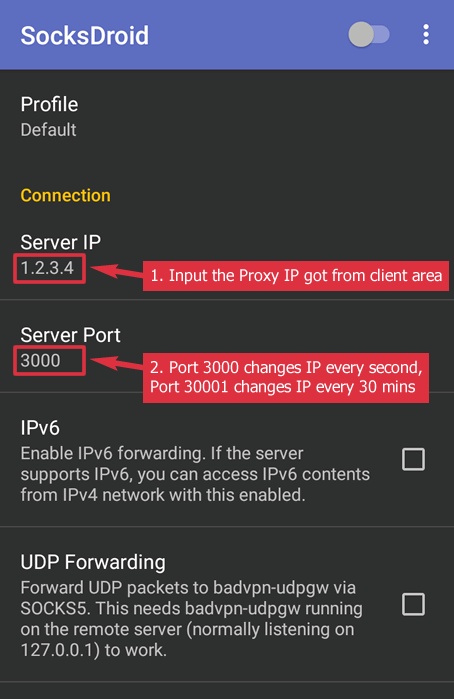
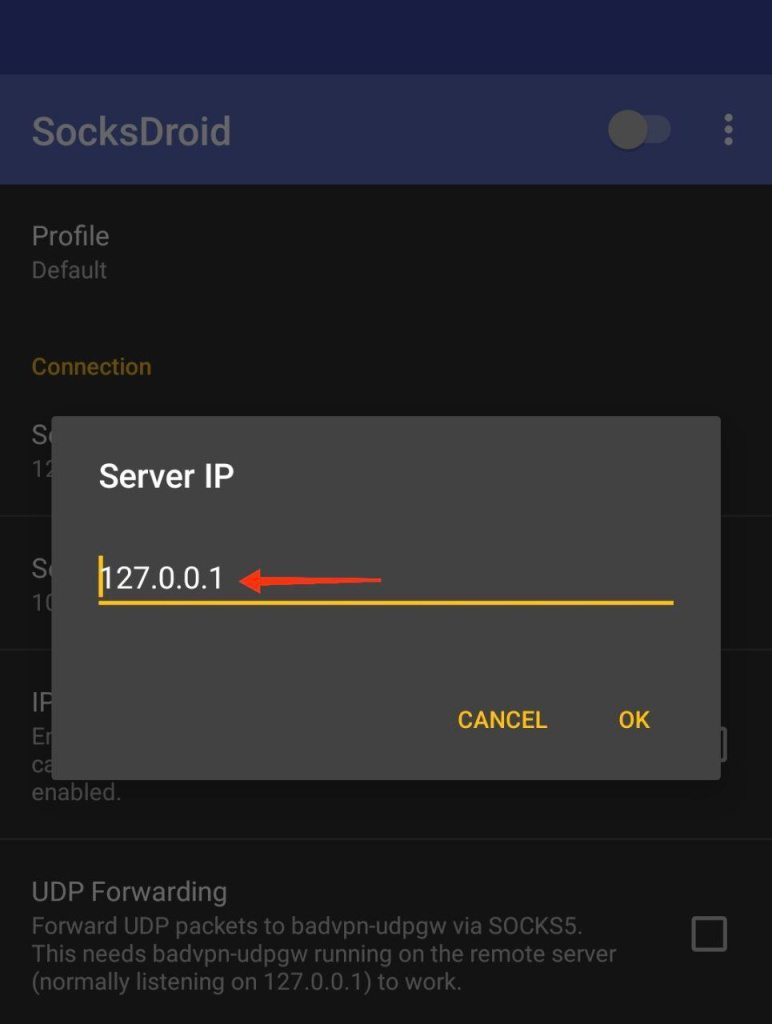
Compatibility with Multiple Apps
SocksDroid uses Android’s VPN service to route traffic through the SOCKS5 proxy, which means it can work with many apps on your device—not just browsers. This broad compatibility allows users to secure traffic from messaging apps, streaming services, or even custom applications, providing system-wide proxy coverage. It’s especially useful for users who want to apply proxy settings without modifying each app individually.
Minimal System Resource Usage
One of the standout features of SocksDroid is its minimal impact on system performance. Unlike some full-scale VPN apps that consume significant memory and battery life, SocksDroid runs efficiently in the background. It doesn’t require root access, and it doesn’t overload your device with unnecessary processes, making it perfect for long-term use without draining your resources. Its lightweight design ensures a smooth user experience, even on older or lower-end Android devices.
Installation and Requirements
Supported Android Versions
SocksDroid is designed to work smoothly on most modern Android devices. It supports:
- Android 5.0 (Lollipop) and above
- Some features may not function correctly on very old devices or heavily modified ROMs
- Root access is NOT required, making it accessible to a wide range of users
Before installing, ensure your device is running at least Android 5.0 for optimal compatibility and security.
Permissions Required
SocksDroid is lightweight and respectful of user privacy. It only requests essential permissions, such as:
- VPN Permission: Needed to create a local VPN interface to route your traffic through a SOCKS5 proxy.
- Internet Access: Required to establish a connection with the remote proxy server.
No intrusive permissions like camera, location, or storage access are requested, which makes SocksDroid a privacy-respecting choice.
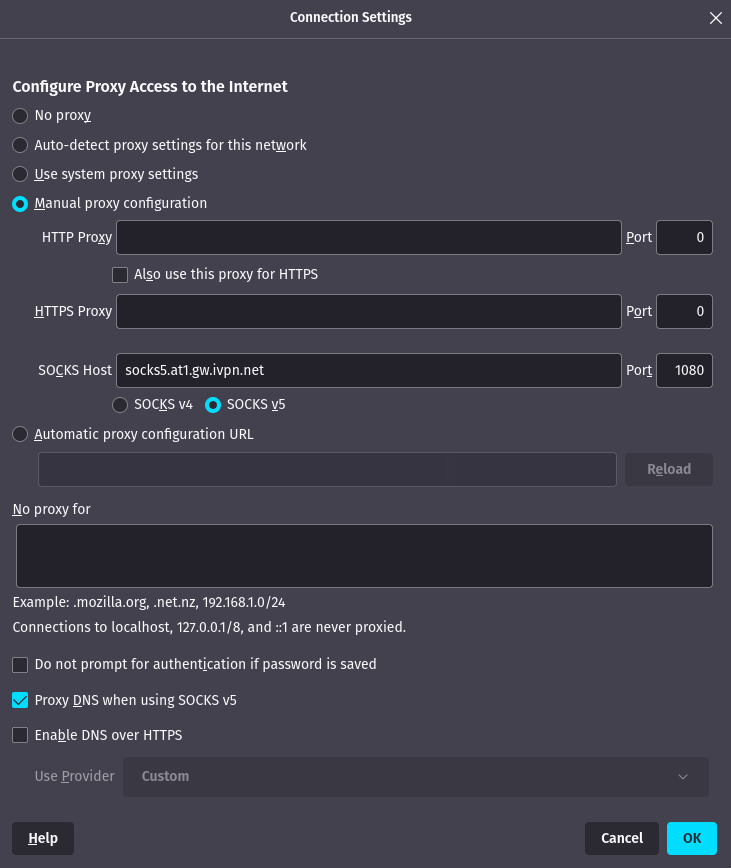
Limitations and Considerations
Not a Full VPN
While SocksDroid routes your internet traffic through a SOCKS5 proxy, it’s important to understand that it is not a full-fledged VPN. A VPN encrypts all of your device’s network traffic and tunnels it through a secure server, offering broader protection, including DNS and IP masking across all apps. In contrast, SocksDroid simply redirects traffic through a proxy server without providing comprehensive encryption or masking all types of data. This means some apps or background services might still leak your real IP or DNS information.
Depends on Proxy Server Quality
The performance and reliability of SocksDroid heavily depend on the quality of the SOCKS5 proxy server you choose. If the server is slow, unstable, or located far from your region, you may experience high latency, dropped connections, or sluggish browsing. Moreover, if you use an untrustworthy proxy, your data could be exposed to malicious actors. Therefore, it’s essential to use trusted and secure SOCKS5 servers to maintain privacy and ensure good performance.
Frequently Asked Questions (FAQs)
What is SocksDroid?
SocksDroid is an Android app that functions as a SOCKS5 proxy client, allowing you to route your device’s internet traffic through a proxy server to enhance privacy and security.
Is SocksDroid free to use?
Yes, SocksDroid is completely free and open-source. You can download it from platforms like F-Droid or GitHub without any cost.
Do I need root access to use SocksDroid?
No, SocksDroid does not require root access. It uses Android’s VPNService API to route traffic through a proxy without needing system-level permissions.
What is a SOCKS5 proxy?
A SOCKS5 proxy routes internet traffic through a remote server, helping users hide their IP address and bypass geo-restrictions while maintaining anonymity.
Is SocksDroid a VPN?
No, SocksDroid is not a full VPN. It works as a local VPN to redirect traffic through a SOCKS5 proxy server, but it does not encrypt data like traditional VPNs.
How do I configure a SOCKS5 proxy in SocksDroid?
You simply open the app, enter the proxy server’s IP address and port, and start the service. Optional authentication can be added if your proxy requires it.
Where can I get a SOCKS5 proxy server to use with SocksDroid?
You can use public SOCKS5 proxy lists or set up your own proxy using tools like Dante, Shadowsocks, or SSH tunneling.
Is SocksDroid secure?
Yes, SocksDroid securely routes traffic through a proxy server. However, since SOCKS5 does not provide encryption, you should use it with encrypted websites (HTTPS) for maximum safety.
Can I use SocksDroid to bypass internet restrictions?
Yes, SocksDroid can help bypass network restrictions, firewalls, or content blocks by redirecting traffic through a proxy in a different region.
Does SocksDroid support authentication?
Yes, SocksDroid supports username and password authentication for SOCKS5 proxies that require it.
Will SocksDroid slow down my internet connection?
Will SocksDroid slow down my internet connection?
It might slightly reduce speed depending on the proxy server’s location and quality, but many users report minimal performance impact.
What apps work with SocksDroid?
Most Android apps that use standard internet connections (HTTP/HTTPS) will work through SocksDroid once the proxy is enabled.
Can I exclude specific apps from using the proxy in SocksDroid?
Currently, SocksDroid routes all traffic through the proxy. App-level exclusions may require advanced firewall or VPN tools.
Is my data encrypted when using SocksDroid?
Not directly. SOCKS5 does not encrypt your data. Use secure websites (HTTPS) or pair SocksDroid with encrypted apps for better privacy.
Is SocksDroid available on the Google Play Store?
Typically, SocksDroid is not available on the Play Store. It is mainly distributed through F-Droid or GitHub for open-source transparency.
Can I use SocksDroid with Tor?
Technically, yes. You can route traffic through a Tor SOCKS5 proxy, but for full Tor support, apps like Orbot may be more suitable.
Does SocksDroid support IPv6?
SocksDroid primarily supports IPv4. IPv6 support may depend on the SOCKS5 proxy server and Android device compatibility.
Can I run SocksDroid in the background?
Yes, SocksDroid can run in the background once started, allowing continued use of the proxy service while using your device.
How can I stop the SocksDroid proxy service?
You can stop the proxy connection directly from the app’s main interface by tapping the “Stop” or “Disconnect” button.
Is SocksDroid open-source?
Yes! SocksDroid is open-source, and the source code is publicly available on GitHub, allowing developers to contribute or review the code for transparency.